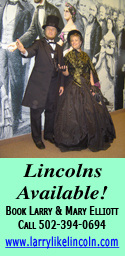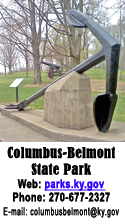|
Jeff Davis pushed U.S. Camel Corps,
initiated highly successful experiment
The U.S. Camel Corps was an experiment encouraged by Jefferson Davis, but then disbanded when the Kentuckian became president of the Confederacy.
Davis, U.S. Secretary of War in 1853, supported the idea of using camels to deliver mail and materiel to the desert area of the West. Two years later, he was able to get the “far-fetched” idea funded and the first ship sailed to the Middle East where the animals were purchased and brought to America. Thirty-three camels and drovers were brought to Indianola, Texas, on the initial trip and another 41 arrived on a second voyage.
The main drover was a 27-year-old Syrian named Hadji Ali, whose identity was mispronounced as “Hi Jolly.”
Davis’ suggested use of the animals proved to be a sound one. The drovers were able to cover nearly 40 miles each day and the camels could go 10 days without water while carrying 600-800 pounds, roughly four times that of a pack mule. And they had an uncanny instinct to find water. The trip found the horses and mules dehydrated and exhausted when the water supply ran out, but the camels instinctively found a river as far as 20 miles from camp and led the group to it.
The only drawback was the cloven hooves of the camels were designed more for sand than for rocks. Hi Jolly wrapped their soft feet in burlap and ultimately fashioned special shoes for them, but rocks still managed to get between their large toes and caused discomfort to the animals.
The camels scared the mules and burros and even their human caretakers disliked their odor as well as their well-known behavioral problems. One soldier compared the spitting camels to having “the accuracy of a Kentucky rifle.”
By 1858, then Secretary of War John Floyd reported to Congress on the positive attributes of the Camel Corps and urged its continuation. With the War Between the States looming on the horizon, funding, however, was not available and Congress did not grant approval and the camels would march into history.
Eventually, hundreds of camels would be in use in the Big Bend area of Texas by the Army and private owners. But, after the Civil War, everything that Davis had touched was scrubbed away – and that included the Army’s camels. The railroads finished them off and, by the 1870s, they were mostly gone.
When the Confederates overran Fort Davis (Texas), the camels were left behind and received little or no care for the next few years. Some eventually were sold to circuses, some were auctioned off and others just left to wander away.
|












